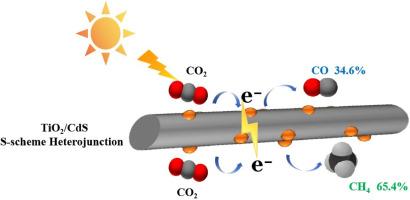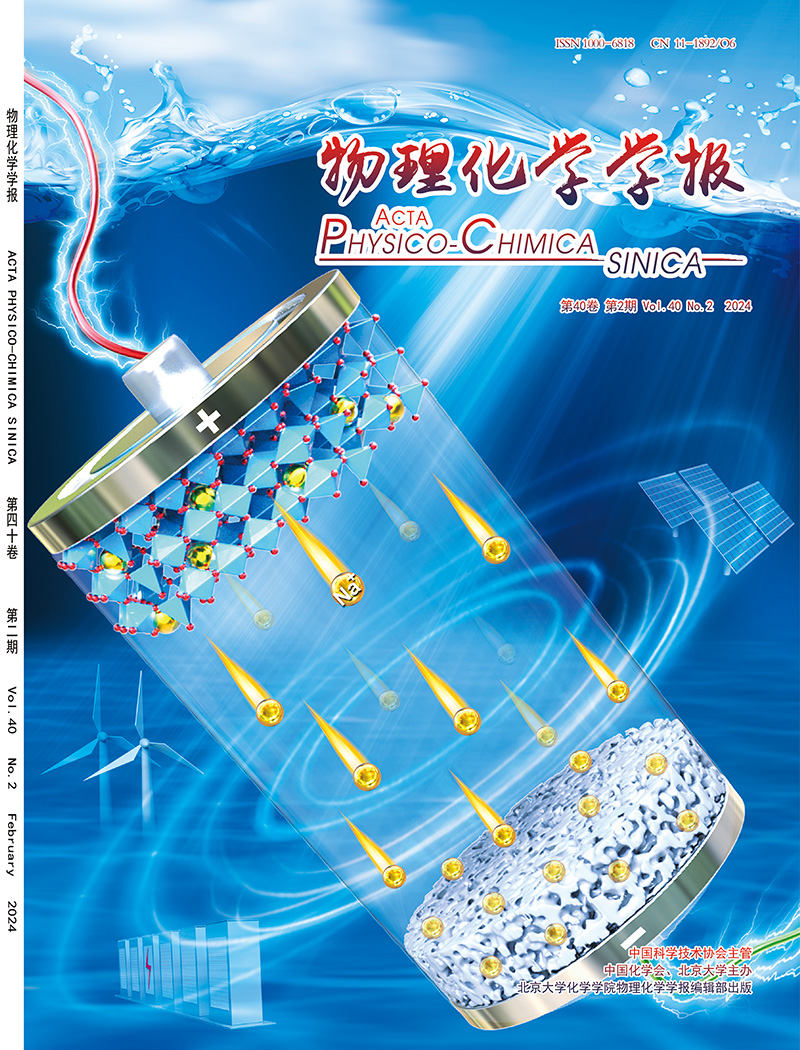Boosting photocatalytic CO2 methanation through TiO2/CdS S-scheme heterojunction and fs-TAS mechanism study
IF 13.5
2区 化学
Q1 CHEMISTRY, PHYSICAL
引用次数: 0
Abstract
The conversion of CO2 into value-added hydrocarbons via photocatalysis holds great promise for sustainable energy, yet achieving high activity and selectivity remains challenging. Herein, a novel TiO2/CdS heterostructured photocatalyst exhibits exceptional performance in CO2 photoreduction. The optimized catalyst delivers a 4.2-fold increase in CH4 production rate compared to pristine TiO2, with a remarkable 65.4 % selectivity toward CH4 (34.6 % CO). The enhanced activity arises from the unique morphology, facilitating CO2 adsorption and mass transfer, and the intimate S-scheme heterojunction between CdS and TiO2, which boosts charge separation while preserving strong redox potentials. Critically, femtosecond transient absorption spectroscopy (fs-TAS) combined with in situ DRIFTS provides direct evidence for the S-scheme pathway and identifies sulfur sites on CdS as key for stabilizing ∗CH3O, ∗CHO and ∗CO intermediates, steering selectivity toward CH4. In addition, theoretical calculations based on density functional theory (DFT) further complement the experimental findings. The calculations confirm the electronic structure characteristics of the S-scheme heterojunction, revealing the energy levels and charge transfer mechanisms at the atomic scale. This not only deepens our understanding of the photocatalytic process but also provides a theoretical basis for further optimizing the photocatalyst design. Overall, our work demonstrates the outstanding performance of the TiO2/CdS heterostructured photocatalyst in CO2 photoreduction.

TiO2/CdS S-scheme异质结促进光催化CO2甲烷化及fs-TAS机理研究
通过光催化将二氧化碳转化为高附加值的碳氢化合物是可持续能源的巨大希望,但实现高活性和选择性仍然具有挑战性。本文中,一种新型TiO2/CdS异质结构光催化剂在CO2光还原中表现出优异的性能。优化后的催化剂对CH4 (34.6% CO)的选择性为65.4%,CH4的产率是原始TiO2的4.2倍。活性的增强源于独特的形态,有利于CO2的吸附和传质,以及CdS和TiO2之间的亲密s型异质结,促进电荷分离,同时保持强氧化还原电位。重要的是,飞秒瞬态吸收光谱(fs-TAS)结合原位漂移为s方案途径提供了直接证据,并确定了CdS上的硫位点是稳定∗ch30,∗CHO和∗CO中间体的关键,将选择性转向CH4。此外,基于密度泛函理论(DFT)的理论计算进一步补充了实验结果。计算证实了s型异质结的电子结构特征,揭示了原子尺度上的能级和电荷转移机制。这不仅加深了我们对光催化过程的认识,也为进一步优化光催化剂的设计提供了理论依据。总之,我们的工作证明了TiO2/CdS异质结构光催化剂在CO2光还原中的卓越性能。
本文章由计算机程序翻译,如有差异,请以英文原文为准。
求助全文
约1分钟内获得全文
求助全文

 求助内容:
求助内容: 应助结果提醒方式:
应助结果提醒方式:


